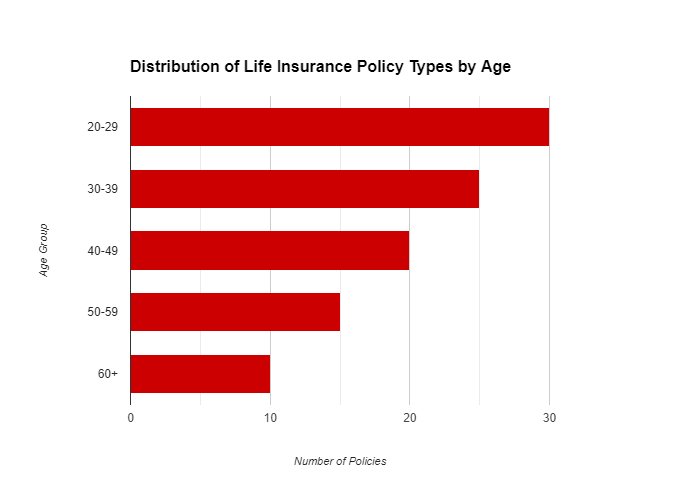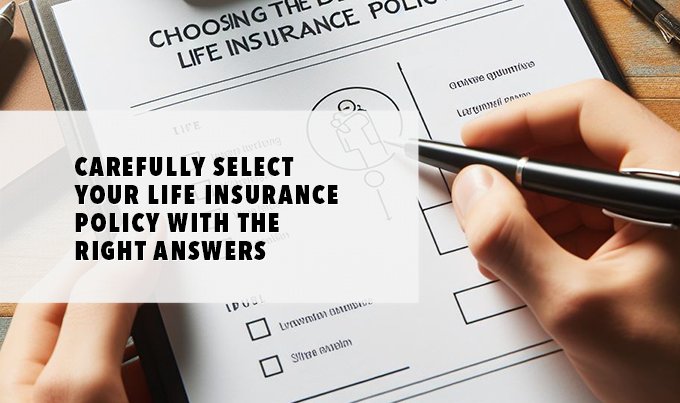Investing in Life Insurance: A Smart Way to Secure Your Future
Contents

Introduction
Investing in life insurance is more than just a way to protect your family in case of death. It can also be a smart way to invest your money and secure your future. So, investing in life insurance can offer several advantages, such as:
- Financial protection: Life insurance can provide a lump sum of money to your beneficiaries upon your death, which can help them cover your final expenses and pay off your debts.
- Tax benefits: Life insurance can offer you tax benefits, such as tax-free death benefits, tax-deferred cash value growth, and tax-free withdrawals and loans, depending on the type of policy and how you use it. J.P. Morgan and FINRA emphasize tax advantages, such as tax-free death benefits and tax-deferred cash value growth. Benefits and drawbacks
- Cash value growth: Some types of life insurance, such as whole, universal, and variable, have a cash value component that grows over time based on the premiums you pay, the interest rate, and the market performance. You can access this cash value for various purposes, such as supplementing your retirement income, paying for education, or funding a business.
However, this investment also involves some risks and challenges, such as:
- Investment risk: Some types of life insurance, such as variable, expose you to market risk, which means that your cash value can fluctuate depending on the performance of the underlying investments. You may lose some or all of your principal if the market declines.
- Policy cancellation: If you stop paying your premiums, your policy may lapse or be canceled, which means that you will lose your coverage and your cash value. You may also face surrender charges or tax penalties if you cancel your policy within a certain period of time.
- Fine print: Life insurance policies can have complex and confusing terms and conditions, such as exclusions, limitations, fees, charges, and riders, that can affect your benefits and costs. You need to read and understand the fine print before you buy a policy and review it regularly to make sure it meets your needs and expectations.
| Key Takeaway | Why It Matters | How to Do It |
|---|---|---|
| Investing in life insurance can provide you with financial protection, tax benefits, and cash value growth. | Life insurance can help you cover your final expenses, pay off your debts, replace your income, and leave a legacy for your loved ones. | You can choose from different types of life insurance policies, such as term, whole, universal, and variable, depending on your goals, budget, and risk tolerance. |
Further to the key takeaway above, it is worth noting that J.P. Morgan Wealth Management and FINRA recommend considering life insurance for financial protection and tax benefits. Also, Experian suggests understanding the impact on credit and financial planning properly while Investor.gov emphasizes the importance of considering different types of policies and weighing your options.
Therefore, you need to consider your goals, budget, and risk tolerance, and carefully choose the type of policy that suits you best. You also need to shop around and compare different policies and providers and consult a professional financial advisor if you need further guidance and advice.
In this article, we will explain the best things to do when investing in life insurance, the different types of policies, the pros and cons of each, and how to choose the best one for you. We will also answer some common questions and provide some tips and resources to help you make an informed decision. Let’s get started!
What Are The Different Types Of Life Insurance Policies?

There are many types of life insurance policies available in the market, but they can be broadly classified into two main categories: term and permanent.
Term life insurance
Among the various life insurance options available, term life insurance stands out as the most straightforward and cost-effective choice. It provides coverage for a specific period of time, usually between 10 to 30 years, and pays a death benefit to your beneficiaries if you die within that term.
Term life insurance does not have a cash value component, which means that you cannot access the money while you are alive. Term life insurance is suitable for people who need temporary protection, such as young families, homeowners, or debtors.
Term life insurance, as highlighted by Jake Shi of MarketWatch, is cost-effective, offering low cost, flexibility, and predictability insurance.
Some of the pros and cons of term life insurance are:
- Pros:
- Low cost: Term life insurance is cheaper than permanent life insurance, as you only pay for the death benefit and not the cash value.
- Flexibility: You can choose the term length, the coverage amount, and the beneficiaries according to your needs and preferences. You can also renew, convert, or cancel your policy at any time.
- Predictability: You know exactly how much you will pay and how much your beneficiaries will receive in case of your death. There are no hidden fees, charges, or surprises.
- Cons:
- No cash value: Term life insurance does not have a cash value component, which means that you cannot use it as an investment or a source of income while you are alive.
- Expiration: Term life insurance expires after the term ends, which means that you will lose your coverage and your premiums if you outlive your policy. You may have to buy a new policy at a higher rate or risk being uninsured.
- Limited benefits: Term life insurance only provides a death benefit, which means that it does not offer any other benefits, such as tax advantages, cash value growth, or policy loans.
Permanent life insurance
Permanent life insurance endorsed by Dow Jones and Policy Genius is a type of life insurance that provides coverage for your entire life, as long as you pay the premiums. Permanent life insurance has a cash value component, which means that a portion of your premiums is invested and grows over time. You can access this cash value for various purposes, such as supplementing your retirement income, paying for education, or funding a business. Permanent life insurance is suitable for people who need lifelong protection, such as high-net-worth individuals, estate planners, or business owners.
Some of the pros and cons of permanent life insurance are:
- Pros:
- Lifetime coverage: Permanent life insurance provides coverage for your entire life, which means that you will never lose your protection or your premiums as long as you pay them.
- Cash value growth: Permanent life insurance has a cash value component, which means that a portion of your premiums is invested and grows over time. You can access this cash value for various purposes, such as supplementing your retirement income, paying for education, or funding a business.
- Tax benefits: Permanent life insurance offers tax benefits, such as tax-free death benefits, tax-deferred cash value growth, and tax-free withdrawals and loans, depending on the type of policy and how you use it.
- Cons:
- High cost: Permanent life insurance is more expensive than term life insurance, as you pay for both the death benefit and the cash value. You may also have to pay additional fees, charges, and commissions that can reduce your returns.
- Complexity: Permanent life insurance is more complex and confusing than term life insurance, as it has various types, features, options, and riders that can affect your benefits and costs. You need to understand the fine print and review your policy regularly to make sure it meets your needs and expectations.
- Risk: Permanent life insurance exposes you to investment risk, which means that your cash value can fluctuate depending on the interest rate and the market performance. You may lose some or all of your principal if the market declines.
There are different types of permanent life insurance policies, such as whole, universal, and variable, that have different characteristics, advantages, and disadvantages. We will discuss them in the next section.
What Are The Different Types Of Permanent Life Insurance

As we mentioned earlier, there are different types of permanent life insurance policies that have different characteristics, advantages, and disadvantages. The following are common options:
1. Whole life insurance
Whole life insurance is the most traditional and basic type of permanent life insurance. It provides coverage for your entire life and pays a fixed death benefit to your beneficiaries upon your death. It also has a guaranteed cash value component that grows at a fixed interest rate set by the insurance company.
You can access this cash value through withdrawals or loans, but you have to pay them back with interest or reduce your death benefit. Whole life insurance is suitable for people who want lifelong protection, predictable returns, and low risk.
Some of the pros and cons of whole life insurance are:
- Pros:
- Guaranteed coverage: Whole life insurance provides coverage for your entire life, which means that you will never lose your protection or your premiums as long as you pay them.
- Guaranteed cash value: Whole life insurance has a guaranteed cash value component that grows at a fixed interest rate set by the insurance company. You can access this cash value through withdrawals or loans, but you have to pay them back with interest or reduce your death benefit.
- Guaranteed dividends: Some whole life insurance policies pay dividends to the policyholders, which are a share of the insurance company’s profits. Utilize these returns to increase your coverage, decrease premium payments, or opt for a cash payout.
- Cons:
- High cost: Whole life insurance is more expensive than term life insurance, as you pay for both the death benefit and the cash value. You may also have to pay additional fees, charges, and commissions that can reduce your returns.
- Low returns: Whole life insurance has a low-interest rate compared to other types of investments, which means that your cash value may not grow as fast as you expect. You may also miss out on higher returns from other investment opportunities.
- Low flexibility: Whole life insurance has a fixed premium, death benefit, and cash value, which means that you cannot adjust them according to your changing needs and preferences. You may also face surrender charges or tax penalties if you cancel your policy within a certain period of time.
Whole life insurance is supported by Mike Miller of CNBC, offers guaranteed coverage and cash value, though with high costs and low flexibility.
2. Universal life insurance
Universal life insurance highlighted by Heidi Mertlich is a type of permanent life insurance that provides more flexibility and control than whole life insurance. It provides coverage for your entire life and pays a variable death benefit to your beneficiaries upon your death.
It also has a cash value component that grows at a variable interest rate based on the market conditions. You can access this cash value through withdrawals or loans, but you have to pay them back with interest or reduce your death benefit.
You can also adjust your premium, death benefit, and cash value according to your needs and preferences. Universal life insurance is suitable for people who want lifelong protection, variable returns, and high flexibility.
Some of the pros and cons of universal life insurance are:
- Pros:
- Flexible coverage: Universal life insurance provides coverage for your entire life, which means that you will never lose your protection or your premiums as long as you pay them. You can also adjust your premium, death benefit, and cash value according to your needs and preferences.
- Flexible cash value: Universal life insurance has a cash value component that grows at a variable interest rate based on market conditions. You can access this cash value through withdrawals or loans, but you have to pay them back with interest or reduce your death benefit.
- Flexible dividends: Some universal life insurance policies pay dividends to the policyholders, which are a share of the insurance company’s profits.
- Cons:
- High cost: Universal life insurance is more expensive than term life insurance, as you pay for both the death benefit and the cash value. You may also have to pay additional fees, charges, and commissions that can reduce your returns.
- High risk: Universal life insurance exposes you to market risk, which means that your cash value can fluctuate depending on the interest rate and the market performance. You may lose some or all of your principal if the market declines.
- High complexity: Universal life insurance is more complex and confusing than whole life insurance, as it has various types, features, options, and riders that can affect your benefits and costs. You need to understand the fine print and review your policy regularly to make sure it meets your needs and expectations.
3. Variable life insurance
Variable life insurance is a type of permanent life insurance that provides more investment options and potential returns than universal life insurance. It provides coverage for your entire life and pays a variable death benefit to your beneficiaries upon your death.
It also has a cash value component that is invested in a variety of sub-accounts, such as stocks, bonds, mutual funds, or index funds, that you can choose from. You can access this cash value through withdrawals or loans, but you have to pay them back with interest or reduce your death benefit.
Similar to the Universal life insurance above, You can also adjust your premium, death benefit, and cash value according to your needs and preferences. Variable life insurance is suitable for people who want lifelong protection, high returns, and high control.
Variable life insurance is endorsed by AM Best. Some of the pros and cons of variable life insurance are:
- Pros:
- High returns: Variable life insurance has a cash value component that is invested in a variety of sub-accounts, such as stocks, bonds, mutual funds, or index funds, that you can choose from. You can potentially earn higher returns than other types of life insurance, depending on the performance of the underlying investments.
- High control: Variable life insurance gives you more control over your investment strategy, as you can choose the sub-accounts, the allocation, and the rebalancing of your cash value. You can also switch between sub-accounts without tax consequences, as long as you stay within the same policy.
- High flexibility: Variable life insurance provides coverage for your entire life, which means that you will never lose your protection or your premiums as long as you pay them. You can also adjust your premium, death benefit, and cash value according to your needs and preferences.
- Cons:
- High cost: Variable life insurance is more expensive than term life insurance, as you pay for both the death benefit and the cash value. You may also have to pay additional fees, charges, and commissions that can reduce your returns. These include management fees, mortality and expense charges, administrative fees, and surrender charges.
- High risk: Variable life insurance exposes you to market risk, which means that your cash value can fluctuate depending on the performance of the underlying investments. You may lose some or all of your principal if the market declines. You also bear the investment risk, which means that you are responsible for the losses and gains of your cash value.
- High complexity: Variable life insurance is more complex and confusing than universal life insurance, as it has various types, features, options, and riders that can affect your benefits and costs. You also need to understand the sub-accounts, the allocation, and the rebalancing of your cash value. You need to understand the fine print and review your policy regularly to make sure it meets your needs and expectations.
Common Questions About Investing In Life Insurance

In this section, we will answer some common questions that people have about investing in life insurance, such as:
- How does life insurance work as an investment?
- What are the benefits and drawbacks of investing in life insurance?
- How to invest in life insurance wisely?
How Does Life Insurance Work As An Investment?
Life insurance works as an investment in two ways: by providing a death benefit and by accumulating a cash value as explained by Liz Knueven from CNBC.
- Death benefit: The death benefit is the amount of money that your life insurance policy pays to your beneficiaries upon your death. This can help them cover their final expenses, pay off their debts, replace their income, and leave a legacy for their loved ones. The death benefit is usually tax-free, which means that your beneficiaries do not have to pay any income tax on it. However, the death benefit may be subject to estate tax, which is a tax on the value of your assets after your death, depending on the size of your estate and the applicable laws.
- Cash value: The cash value is the amount of money that your life insurance policy accumulates over time based on the premiums you pay, the interest rate, and the market performance. The cash value is usually tax-deferred, which means that you do not have to pay any income tax on it until you withdraw or borrow from it. You can access your cash value for various purposes, such as supplementing your retirement income, paying for education, or funding a business. However, the cash value may be subject to surrender charges, tax penalties, or interest charges, depending on the type of policy and how you use it.
What Are The Benefits And Drawbacks Of Investing In Life Insurance?
Life insurance investment can offer you several benefits and drawbacks, depending on the type of policy and how you use it. Here are some of the main ones:
- Benefits:
- Financial protection: Investing in life insurance can provide you with financial protection for your family in case of your death, which can help them cover your final expenses, pay off your debts, and replace your earnings while sustaining your lifestyle is crucial.
- Tax benefits: It can offer you tax benefits, such as tax-free death benefit, tax-deferred cash value growth, and tax-free withdrawals and loans, depending on the type of policy and how you use it.
- Cash value growth: It can offer you cash value growth, which means that a portion of your premiums is invested and grows over time. You can access this cash value for various purposes, such as supplementing your retirement income, paying for education, or funding a business.
- Drawbacks:
- Investment risk: The insurance can expose you to investment risk, which means that your cash value can fluctuate depending on the interest rate and the market performance. You may lose some or all of your principal if the market declines.
- Policy cancellation: It can expose you to policy cancellation, which means that if you stop paying your premiums, your policy may lapse or be canceled, which means that you will lose your coverage and your cash value. You may also face surrender charges or tax penalties if you cancel your policy within a certain period of time.
- Fine print: It can expose you to fine print, which means that your policy may have complex and confusing terms and conditions, such as exclusions, limitations, fees, charges, and riders, that can affect your benefits and costs. You need to read and understand the fine print before you buy a policy and review it regularly to make sure it meets your needs and expectations.
In all, benefits and drawbacks, as provided by Brian Kaplan of Lenox Advisors, include financial protection, tax benefits, cash value growth, investment risk, policy cancellation, as well as the complexity of the fine print.
How To Invest In Life Insurance Wisely?

According to Policygenius and Guardian Life Insurance, investors should define their goals and needs. This requires careful planning, research, and comparison. You need to consider your goals, budget, and risk tolerance, and choose the type of policy that suits you best. You also need to shop around and compare different policies and providers and consult a professional financial advisor if you need guidance and advice.
State Farm Life Insurance recommends using online tools to estimate needs and costs while LendingClub High-Yield Savings suggests checking ratings and reviews of insurance companies before making your choices.
You should always read and understand the fine print of your policy and review it regularly to make sure it meets your needs and expectations. Here are some tips and resources to help you invest in life insurance wisely:
- Know your goals and needs: Before you buy a life insurance policy, you should have a clear idea of why you need it, how much coverage you need, and for how long. You should also consider your budget, risk tolerance, and investment strategy. You can use online calculators, such as this one, to estimate your life insurance needs and costs.
- Shop around and compare: You should not buy the first policy you see or the one that your agent recommends. You should shop around and compare different policies and providers, and look for the best value, not the lowest price. You should also check the ratings, reviews, and reputation of the insurance companies, and look for their financial strength, customer service, and claims history. You can use online tools, such as this one, to compare the ratings and reviews of different insurance companies.
- Read and understand the fine print: You should not sign any contract or agreement without reading and understanding the fine print of your policy. You should look for the terms and conditions, such as exclusions, limitations, fees, charges, and riders, that can affect your benefits and costs. You should also look for features and options, such as dividends, premium adjustments, policy loans, and conversion rights, that can enhance your policy. You should ask questions and seek clarification if you have any doubts or concerns.
- Review and update your policy regularly: You should not buy a policy and forget about it. You should review and update your policy regularly, at least once a year, to make sure it meets your current needs and expectations. You should also inform your beneficiaries and your insurance company of any changes in your personal or financial situation, such as marriage, divorce, birth, death, income, or health. You should also check the performance and value of your policy, and make any adjustments or changes if necessary.
Conclusion
Investing in life insurance can be a smart way to secure your future, as it can provide you with financial protection, tax benefits, and cash value growth. However, this insurance also involves some risks and challenges, such as investment risk, policy cancellation, and fine print, therefore, it requires careful planning and proper research.
Consider goals, budget, and risk tolerance, and choose the policy that suits you best. In fact, Amy Fontinelle, Thomas J. Catalano, and Amanda Bellucco-Chatham from Investopedia strongly recommend consulting professional advisors to make informed decision.
Summary:
| Topic | Investing in life insurance |
|---|---|
| What is it? | A way to provide financial protection, tax benefits, and cash value growth for yourself and your family. |
| How does it work? | You pay premiums to an insurance company, which pays a death benefit to your beneficiaries upon your death. Some policies also have a cash value component that grows over time and can be accessed for various purposes. |
| What are the types? | There are two main types: term and permanent. Term provides coverage for a specific period of time, while permanent provides coverage for your entire life. Permanent has different subtypes, such as whole, universal, and variable, that have different pros and cons. |
| How to choose the best type? | You need to consider your goals, budget, and risk tolerance, and compare different policies and providers. You also need to consult a professional financial advisor if you need guidance and advice. You should always read and understand the fine print of your policy and review it regularly. |
| What are the benefits and drawbacks? | The benefits include financial protection, tax benefits, and cash value growth. The drawbacks include investment risk, policy cancellation, and fine print. |
| What are some tips and resources? | Some tips and resources are: – Know your goals and needs. – Shop around and compare. – Read and understand the fine print. – Review and update your policy regularly. |